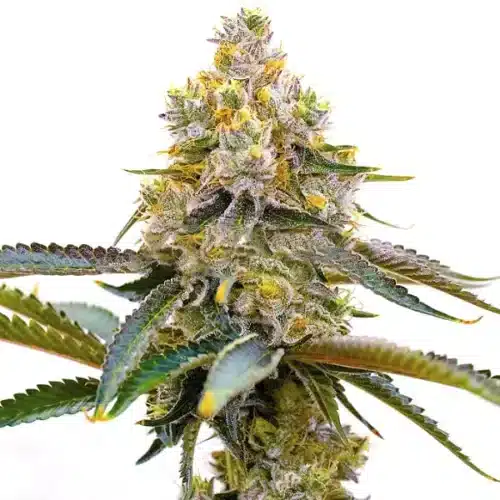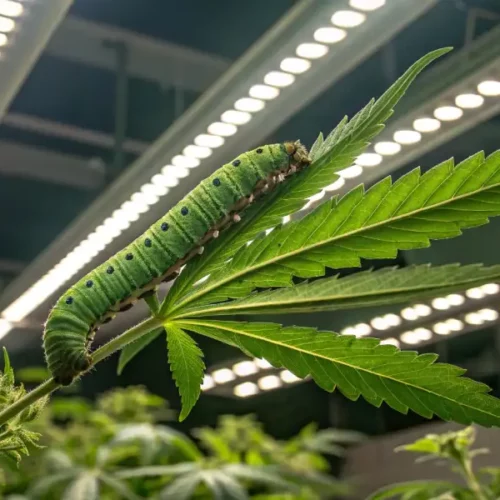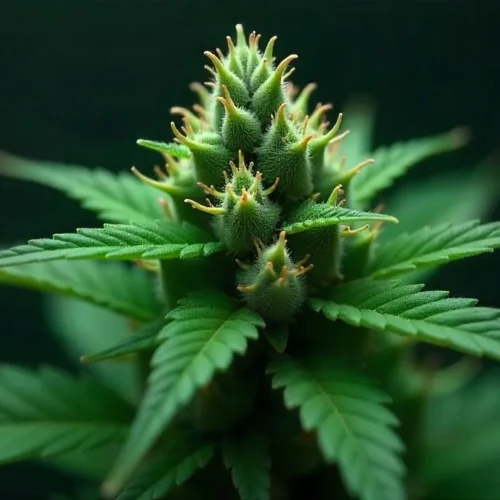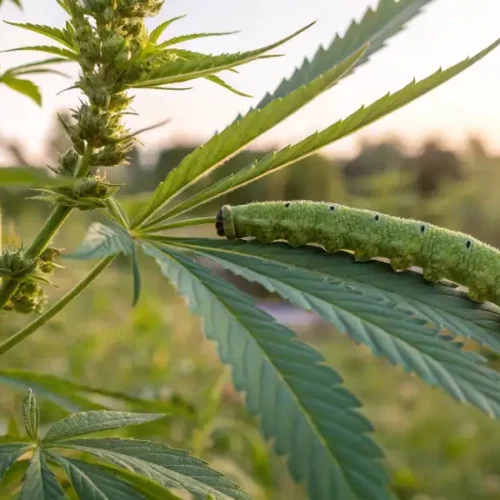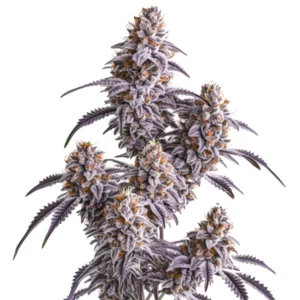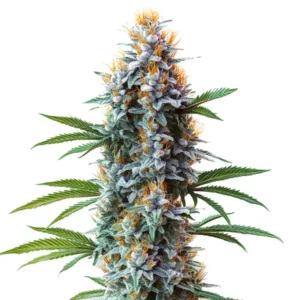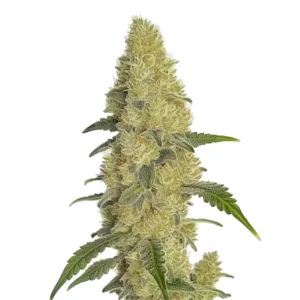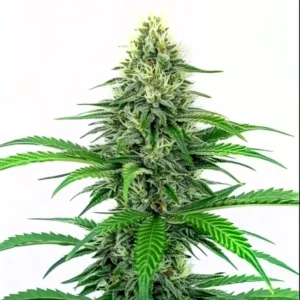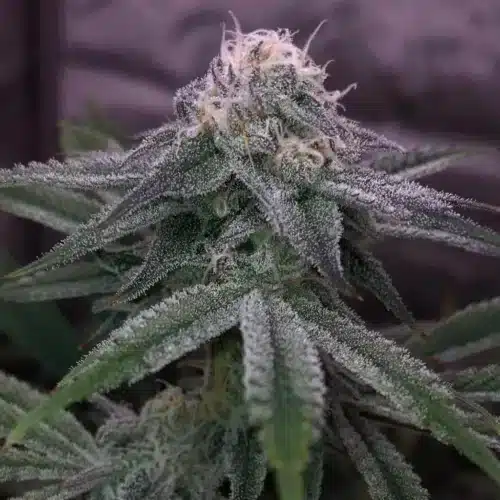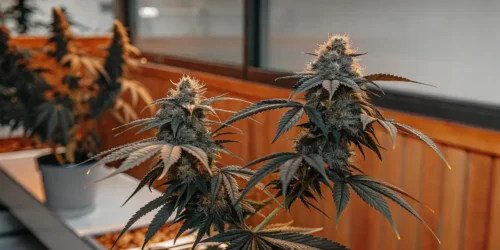Cannabis growers know that cloning provides a consistent, efficient way to expand their crop. But when it comes to hydro clones, the process introduces unique benefits, helping growers achieve faster, more consistent growth without the challenges that soil presents. Hydro clones are propagated directly in water, a method that offers greater control over nutrient intake, root health, and overall plant growth. For cannabis cultivators aiming to maximize yield and quality, hydro cloning can be an ideal technique.
This guide explores everything you need to know about hydro clones, from setting up the right system to ensuring robust growth at every stage. With the right setup and care, hydro clones can thrive, giving you stronger plants and a greater return on your investment.
Recommended Strains
Alaskan Purple
 THC: 15 - 20%
THC: 15 - 20% Type of seed: Feminized
Type of seed: Feminized Phenotype: Mostly Indica
Phenotype: Mostly Indica Day to flower: 8 - 10 weeks
Day to flower: 8 - 10 weeks
Amnesia Purple
 THC: 18% - 21%
THC: 18% - 21% Type of seed: Feminized
Type of seed: Feminized Phenotype: Mostly Sativa
Phenotype: Mostly Sativa Day to flower: 8 - 10 weeks
Day to flower: 8 - 10 weeks
Selecting the Best Setup for Hydro Clones
Benefits of Using Hydroponics for Cloning
When you clone cannabis using hydroponics, you streamline nutrient delivery straight to the roots. This system bypasses the challenges of soil, such as inconsistent nutrient distribution or soil-borne diseases, making it an attractive choice for cannabis growers. With hydroponics, clones develop faster, and the roots have direct access to oxygenated water and nutrients, which leads to quicker, healthier growth.
Choosing a hydro setup allows you to control the entire growth environment meticulously. This level of control over variables such as pH, oxygen levels, and nutrient concentration means you can better support each stage of growth for your clones, leading to a stronger and more productive crop.
Choosing Between Different Hydroponic Systems for Cloning
Not all hydroponic systems are alike, and choosing the right one for hydro clones can make all the difference. The most common options for hydro cloning include deep water culture (DWC), nutrient film technique (NFT), and aeroponics. DWC is often favored due to its simplicity and effectiveness, clones are suspended in oxygenated water, allowing roots to absorb nutrients directly.
NFT and aeroponic systems also offer strong results, though they are generally more technical to set up. In an NFT setup, a thin film of nutrient solution flows over the roots, while aeroponics uses mist to keep roots hydrated. Choosing the right system depends on your comfort level with each method and the size of your operation. Each of these setups provides optimal conditions for cloning, but the most straightforward option for many is DWC, especially for beginners.
Essential Equipment Needed for Hydro Cloning Success
For successful hydro clones, you’ll need specific equipment to create a stable and thriving environment. Basic tools include a cloning tray, rooting hormones, and grow lights, but with hydro clones, additional elements are essential. A reliable air pump, air stones, and net pots will oxygenate the water and create an ideal setup for root growth. High-quality nutrients designed for hydroponic growth are also crucial, as they provide the essential elements clones need.
Additionally, a pH meter and nutrient solution are critical in keeping water at ideal pH and nutrient levels, which is vital for clones to root and grow successfully. Other equipment, like humidity domes and heaters, can help regulate the environmental factors, particularly if you’re growing in cooler areas. With the right equipment and a well-maintained environment, hydro clones can flourish and provide high-quality cannabis plants for any grower.
Promos & Deals
Nutrient and Water Requirements for Hydro Clones
Preparing a Nutrient Solution for Hydro Clones
One of the major benefits of hydroponic cloning is the control you gain over nutrient delivery. Clones, especially in their early stages, have unique nutritional needs that a hydro setup can easily meet. A balanced nutrient solution designed specifically for cannabis clones supports healthy root development and helps clones transition from cutting to mature plant. Look for a solution that includes nitrogen, phosphorus, and potassium in the right ratios, as well as secondary nutrients like magnesium and calcium.
Prepare your solution carefully, as even minor imbalances can impact clone health. Overfeeding can damage young roots, so following nutrient guidelines is essential. Begin with half-strength solutions and increase as clones develop more robust root systems. Keeping clones in this nurturing, nutrient-rich environment from the start will ensure that they can grow rapidly and healthily.
Balancing pH Levels for Healthy Clone Growth
For hydro clones, pH levels in the water are as important as the nutrients themselves. In hydroponic cloning, the ideal pH range sits between 5.5 and 6.5. Within this range, nutrients dissolve efficiently, allowing roots to absorb them more effectively. Using a pH meter regularly can help you keep these levels steady. If the pH drifts, adjusting it is simple with pH up or pH down solutions, which are readily available at any grow supply store.
Maintaining balanced pH is crucial for clone health. An imbalance can lead to nutrient lockout, where nutrients are present in the water but unavailable to the plant. This can cause deficiencies and slow growth. By keeping pH stable, you’re giving your hydro clones the best environment to thrive and flourish from their earliest days.
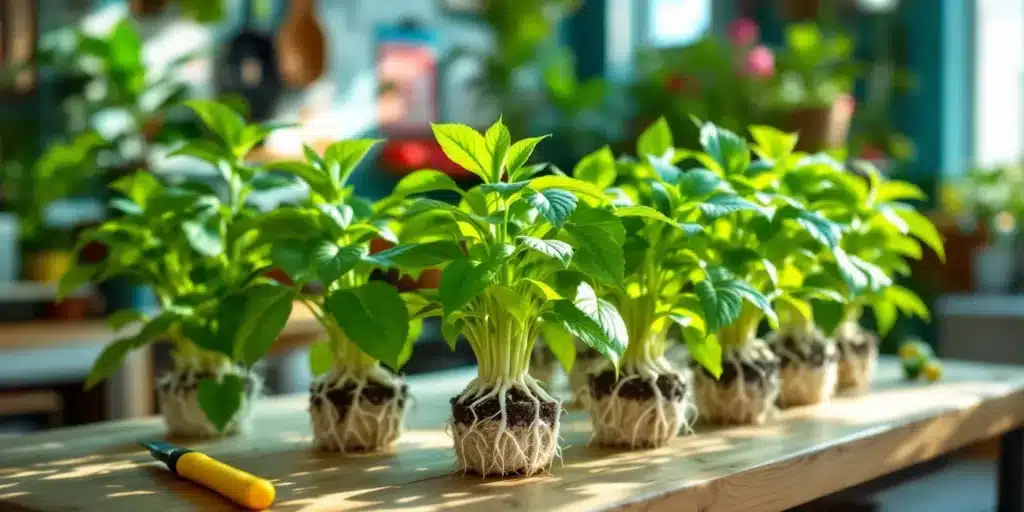
Light and Temperature Needs for Hydro Clones
Ideal Light Schedules for Hydroponic Clones
Getting the light schedule right for hydro clones is a critical step in ensuring rapid, healthy growth. During the initial rooting phase, clones benefit from a gentle but consistent light source. Typically, a schedule of 18 hours of light and 6 hours of darkness works well, providing the clones with adequate energy without overstimulating them. This balance helps them focus on root development, setting a strong foundation for later growth.
Using low-intensity light, such as T5 fluorescent or LED grow lights, provides clones with the gentle light exposure they need without risking light stress. High-intensity light sources can overwhelm the clones early on, so keeping light levels moderate is ideal during the initial phases. As clones develop more robust roots, you can gradually increase light intensity to encourage stronger, healthier growth.
Controlling Temperature and Humidity in Hydro Cloning
Temperature and humidity play vital roles in hydro cloning success. The ideal temperature range for hydro clones is between 70°F and 78°F. Keeping temperatures stable in this range promotes healthy root development and prevents the onset of diseases like root rot. Many growers use a heat mat under the cloning setup to maintain optimal temperatures, particularly in cooler environments.
Humidity is equally important, as clones require high moisture levels to support root formation. Aim to keep humidity between 70% and 80% during the rooting phase. Using a humidity dome can help retain moisture, but be sure to ventilate periodically to prevent mold growth. By keeping temperature and humidity within these optimal ranges, you provide a controlled environment that fosters quick, stable clone growth.
Importance of Light Intensity in Hydroponic Cloning Systems
Light intensity is another factor that can impact clone growth, particularly as clones transition from rooting to vegetative stages. Initially, clones require low-intensity light, but as they mature and develop roots, they can handle increased light exposure. For best results, keep light intensity around 100–200 µmol/m²/s during the early rooting stage and increase it gradually as roots develop.
Monitoring light intensity ensures clones receive enough energy to grow without becoming stressed. Tools like PAR meters allow you to measure light intensity accurately, so you can adjust as needed. Keeping light at the optimal intensity levels throughout each stage can help clones grow faster and healthier, setting them up for a successful transition into full vegetative growth.
Hydro Cloning Techniques for Better Rooting

Using Rooting Hormones in Hydro Cloning
Rooting hormones are a valuable addition to any hydro cloning setup, helping to speed up root formation and improve the overall success rate of clones. Products like rooting gels and powders contain natural or synthetic auxins, plant hormones that encourage root development. To apply, dip the clone’s cut end into the rooting hormone before placing it in the hydro system. This gives the clone a boost, helping roots to form faster and more uniformly.
Using rooting hormones also makes clones more resilient to environmental stressors, such as slight pH shifts or nutrient fluctuations. Clones treated with rooting hormones generally develop thicker, stronger roots, which helps them transition more easily to their next growth stage. Rooting hormones can be especially beneficial for beginners looking to improve the consistency of their hydro cloning results.
Tips for Encouraging Stronger Root Development
Strong roots are the foundation of healthy cannabis clones, especially in hydroponic setups. One effective technique for promoting root growth is to maintain high oxygen levels in the water. Adding an air pump and air stones to your hydro system ensures that oxygen reaches the roots consistently. Oxygen-rich water reduces the risk of root diseases and helps clones absorb nutrients more efficiently, leading to faster growth.
Additionally, periodically monitoring and adjusting the water level helps ensure roots receive adequate moisture and oxygen. Lowering the water level slightly once roots start to develop encourages them to stretch and grow deeper, resulting in a more robust root system. Strong root systems support larger plants and healthier clones, which ultimately leads to higher yields.
Managing Water Levels and Root Growth in Hydro Systems
Maintaining the right water level in your hydroponic system is essential for successful cloning. During the early stages, keep the water level high enough to cover the bottom of the cutting to stimulate initial root growth. As roots develop, gradually lower the water level to expose more of the root system to oxygen. This technique helps prevent root rot, a common issue in hydro setups, and promotes faster growth.
Water levels should be checked regularly, as they tend to fluctuate due to evaporation. Refill the system with pH-balanced water as needed, ensuring that the water level remains steady. Over time, managing water levels becomes easier as the roots develop and stabilize, but frequent monitoring in the early stages is key to clone success.
Troubleshooting Common Issues in Hydro Cloning
Recognizing Signs of Overwatering and Underwatering
Hydro cloning offers many advantages, but it can also be tricky to manage water levels. Overwatering in a hydro setup can lead to a lack of oxygen, causing root rot or other fungal issues. Look for signs such as yellowing leaves, mushy stems, or a foul smell coming from the roots, as these can indicate overwatering. Ensuring adequate oxygenation through air stones and pumps can help prevent these issues.
Underwatering, though less common in hydro cloning, may occur if water levels drop too low. When clones don’t receive enough moisture, their leaves may wilt, and root growth can slow. Regularly checking water levels and oxygenation will help maintain the right conditions and prevent these issues from affecting your hydro clones.
Addressing Nutrient Deficiencies in Hydro Clones
Nutrient deficiencies can be common in hydro cloning, especially if the pH is off or if clones aren’t receiving the right balance of nutrients. Symptoms like yellowing, stunted growth, or leaf spotting indicate potential deficiencies. Adjusting the nutrient solution and checking the pH can quickly resolve these issues, helping clones regain their health.
Keeping nutrient levels balanced is essential for hydro clones’ success. Test the solution regularly and adjust as needed to ensure clones receive all essential nutrients. A consistent nutrient supply helps clones grow stronger, establishing them as healthy plants with high yield potential.

Transplanting Hydro Clones to Soil or Other Media
When to Transition Hydro Clones to Soil
Timing is key when transitioning hydro clones to soil or another growth medium. Typically, once clones have developed a healthy root system, generally after 2–3 weeks in the hydro setup, hey are ready for transplanting. Look for white, robust roots that have filled out the water space without appearing overgrown. Transplanting at the right moment prevents stress and gives clones a seamless transition into their new environment, allowing for uninterrupted growth.
Before transferring clones, ensure the new medium is prepared and that the environment mirrors the conditions the clones have been accustomed to in hydroponics. Maintaining similar temperature and humidity levels eases the transition, giving clones the best chance at thriving in soil or another chosen substrate. A smooth transplant sets the stage for continued growth, leading to healthier, higher-yielding plants.
Techniques for Transplanting Without Causing Shock
Transplant shock can be a major setback for hydro clones if not handled properly. Start by acclimating clones to the new environment before fully moving them, gradually exposing them to the temperature and light intensity they’ll experience post-transplant. This “hardening off” process helps prepare clones and minimizes the risk of stress.
Gently remove each clone from the hydro system, taking care not to damage the roots. Place the clone into pre-moistened soil or another medium, ensuring that the roots are fully covered and supported. Water lightly after transplanting to encourage root establishment, and avoid high-intensity light for the first few days to allow clones time to adjust to their new medium.
Adapting Nutrients and Light After Transplanting
After transplanting hydro clones into soil or a new medium, nutrient needs will likely change. Soil typically contains more natural nutrients than a hydro setup, so reduce nutrient applications accordingly to avoid over-fertilization. Start with a mild nutrient solution and gradually increase strength as clones adapt to their new environment, monitoring for any signs of nutrient burn or deficiencies.
Adjusting the light setup is also crucial for a successful transition. Initially, use moderate light levels to avoid overwhelming the clones. Once they have established themselves in the new medium, gradually increase light intensity to support vegetative growth. Balancing nutrients and light intensity through the transition phase ensures clones continue developing without any setbacks.
FAQs on Hydro Clones
What are the benefits of using hydro clones?
Hydro clones allow faster root development due to the oxygen-rich water environment. This technique enables precise nutrient control and can result in a more rapid growth cycle compared to soil cloning.
Do hydro clones require rooting hormones?
While not necessary, rooting hormones can enhance hydro clone success rates by encouraging faster root growth. These hormones are particularly helpful for beginners or if you’re working with difficult-to-root strains.
How long do hydro clones take to root?
Hydro clones typically start showing root growth within 7 to 14 days, though this can vary based on strain, temperature, and overall setup. A well-maintained hydro system promotes faster rooting compared to soil-based methods.
What light schedule works best for hydro clones?
An 18/6 light schedule (18 hours of light, 6 hours of darkness) is ideal for hydro clones. This provides sufficient energy for growth while allowing clones a rest period, promoting healthy root and shoot development.
Can hydro clones be transplanted to soil?
Yes, hydro clones can be transplanted to soil. Ensure they have a well-established root system, and gradually acclimate them to the soil environment to avoid transplant shock.
How often should the water in a hydro cloning system be changed?
Changing the water every one to two weeks is recommended to prevent nutrient imbalances and the buildup of pathogens. Regular monitoring of pH and nutrient levels will help maintain a healthy environment for clone growth.
How do I prevent root rot in hydro clones?
To prevent root rot, maintain proper oxygenation in the water with air stones or pumps, keep water temperatures between 65°F and 70°F, and change the water regularly to reduce pathogen growth.


